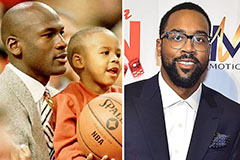Throughout the captivating and usually unpredictable whole world of specialist fumbling, champion belts hold a significance that transcends plain decoration. They are the utmost symbols of accomplishment, effort, and prominence within the squared circle. Among one of the most respected and historically rich titles in the sector are the WWF Champion Belts, a lineage that dates back to the extremely foundation of what is now called copyright. These belts have not just stood for the peak of battling prowess yet have also advanced in style and meaning together with the promo itself, ending up being iconic artifacts cherished by fans worldwide.
The journey of the WWF Champion started in 1963 when the Entire World Wide Fumbling Federation (WWWF), the forerunner to the WWF and eventually copyright, was developed. Complying with a disagreement with the National Fumbling Alliance (NWA), Northeast promoters established their very own banner and acknowledged Friend Rogers as their inaugural WWWF Entire world Heavyweight Champion on April 25, 1963. Surprisingly, some accounts suggest that Rogers was awarded the WWWF title belt, which was an old USA title he currently possessed, as a placeholder until a brand-new design could be produced.
Throughout the WWWF age (1963-1979), the champion belt went through numerous iterations, frequently accompanying the periods of its most prominent holders. Bruno Sammartino, the fabulous "Living Legend," held the title for an remarkable mixed overall of over 4,000 days across 2 reigns. Throughout his time, different designs were seen, consisting of one formed like the contiguous USA, highlighting the regional roots of the promo. Later on, a extra typical style featuring two wrestlers grappling above an eagle came to be synonymous with Sammartino's 2nd power and the champs that followed him, such as " Super Star" Billy Graham and Bob Backlund.
The year 1979 noted a substantial shift as the WWWF formally came to be the World Wrestling Federation (WWF). This rebranding would ultimately lead to changes in the champion's name and appearance. In the very early 1980s, as the WWF started its ascent towards becoming a international sensation, a larger, eco-friendly natural leather belt with giant gold plates was presented. This design featured a wrestler holding a championship with the globe behind him, absolutely announcing the owner as the " Globe Champion." Notably, the side plates of this variation detailed the family tree of previous champions, a tradition that recognized the title's rich history. This famous belt was held by numbers like Bob Backlund, The Iron Sheik, and, a lot of famously, Hunk Hogan, who brought it throughout the "Hulkamania" age, a period of extraordinary mainstream success for the WWF.
The mid to late 1980s saw the intro of what lots of think about among one of the most precious designs in battling background: the "Winged Eagle" champion. Debuting in early 1988, with Hulk Hogan as the first holder, this style featured a magnificent eagle with outstretched wings as the focal point, flanked by smaller side plates. The "Winged Eagle" belt came to be a sign of excellence throughout the late 1980s "Rock 'n' Fumbling" age and well right into the 1990s "New Generation" age. Renowned champs such as Randy Savage, The Ultimate Warrior, Bret "Hitman" Hart, and Shawn Michaels all happily held this version of the title. The "Winged Eagle" even transitioned into the early years of the " Mindset Era," with " Rock Cold" Steve Austin being the last wwf belts full time champion to wear it.
The " Mindset Age," which blew up in popularity in the late 1990s, brought with it a much more aggressive and edgy visual, mirrored in the WWF Champion style. In late 1998, the " Huge Eagle" belt was introduced. This layout featured a bigger central plate with a famous WWF "scratch" logo design, representing the business's modern identification. While maintaining a sense of prestige, the "Big Eagle" style aligned with the rebellious spirit of the era and was held by famous figures like "Stone Cold" Steve Austin, The Rock, and Mick Foley.
As the calendar turned to the new millennium, the WWF underwent another improvement, ending up being Entire world Wrestling Enjoyment (copyright) in 2002. This era likewise saw the marriage of the WWF Championship with the copyright Champion (acquired after copyright's acquisition of World Championship Fumbling). The " Indisputable" championship was represented by both the "Big Eagle" and the copyright's "Big Gold Belt" being held all at once. This marriage was short-term, as the re-established copyright split its roster right into 2 brands, Raw and copyright, bring about the production of a brand-new Entire world Heavyweight Championship for the Raw brand name, while the original title ended up being exclusive to copyright and was renamed the copyright Championship.
Since then, the copyright Champion has actually remained to progress in name and style. In the mid-2000s, John Cena introduced the "Spinner" belt, a controversial however indisputably attention-grabbing style featuring a huge copyright logo that might rotate. This reflected Cena's personality and attract a younger target market. Subsequent designs have aimed to mix modern visual appeals with a feeling of background and status.
In recent years, specifically because April 2022, the copyright Champion has actually been safeguarded along with the copyright Universal Champion as the Indisputable copyright Universal Champion, though both titles kept their specific family trees. Originally represented by both belts, a solitary, unified layout ultimately arised, decorated with black diamonds and the owner's personalized side plates. As of April 13, 2025, Cody Rhodes holds the Indisputable copyright Championship, having actually merged it after beating Roman Reigns at copyright XL in 2024. Following his success, copyright formally relabelled the unified title to the Undeniable copyright Championship.
The WWF Championship Belts, throughout their different versions, have functioned as more than simply prizes. They represent heritages, ages, and the many stories informed within the fumbling ring. Each style is intrinsically connected to the champs who held them and the periods they specified. From the traditional majesty of the "Winged Eagle" to the vibrant declaration of the " Rewriter" and the present unified design, these belts are concrete items of wrestling history, instantly well-known symbols of greatness on the planet of expert wrestling. Their advancement mirrors the advancement of the company itself, constantly adapting to the moments while for life honoring the rich custom upon which they were developed.
 Ralph Macchio Then & Now!
Ralph Macchio Then & Now! Burke Ramsey Then & Now!
Burke Ramsey Then & Now! Marcus Jordan Then & Now!
Marcus Jordan Then & Now! Robbie Rist Then & Now!
Robbie Rist Then & Now! Sarah Michelle Gellar Then & Now!
Sarah Michelle Gellar Then & Now!